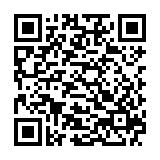We’ve all seen them, optical illusions that make lines look crooked when they’re straight, or images that seem to shift or pulse before your eyes. These mind tricks don’t just entertain. They reveal something fascinating about how the brain works: it’s constantly filling in the blanks.
But what if this mental auto-complete doesn’t stop at vision? What if it affects how we process language, too?
Predictive Processing: The Brain’s Favorite Shortcut
Neuroscientists now believe that the brain is a prediction machine. It doesn’t just passively receive input from your senses, it actively guesses what’s coming next. That’s why you can read a sentence with a missing word and still understand it. Or why you can catch a mumble in conversation, even if you didn’t hear every syllable.
This is called predictive processing. Your brain uses context, past experiences, and linguistic structure to make fast, almost automatic assumptions. It’s efficient. It’s helpful. But it’s also fallible.
How This Affects Interpreting
For interpreters, this has big implications. Imagine translating a speaker who talks fast, uses idioms, or drops off mid-sentence. Your brain might fill in the blanks based on experience, but that mental shortcut could lead you slightly astray.
That’s why interpreters are trained to stay sharp, resist assumptions, and rely on full comprehension rather than guesswork. Still, predictive processing happens naturally. Being aware of it is the first step in managing it.
Optical Illusions vs. Auditory Illusions
Just like optical illusions mess with what you see, auditory illusions play tricks on what you hear. Think of the famous Laurel vs. Yanny clip, or the “phantom words” phenomenon, where your brain hears words that aren’t actually spoken.
These illusions show that hearing, like vision, is shaped by expectation. You hear what your brain thinks you should hear. That’s great when it works, but tricky when it doesn’t, especially if you’re an interpreter needing to be precise.
Reconstructing Meaning
Language is full of ambiguity, and your brain is constantly solving puzzles: What does that pronoun refer to? Did that speaker mean “bank” as in money or river? Interpreters do this mental gymnastics at lightning speed. It’s not about perfection, it’s about rapid, informed decision-making under pressure.
Like optical illusions, language processing is a dance between perception and context. Interpreters don’t just translate words. They reconstruct meaning in real time.
The Art of Noticing
Interpreters who understand these brain tricks can train themselves to notice them. Instead of being thrown off by a fast talker or an unclear phrase, they recognize the patterns behind the confusion.
Because in interpreting, as in illusions, what you think you see or hear isn’t always what’s really there.
Understanding that is what separates good interpreters from great ones: the ability to slow down a fast brain just enough to stay accurate, even in the blur of real-time speech.





0 Comments